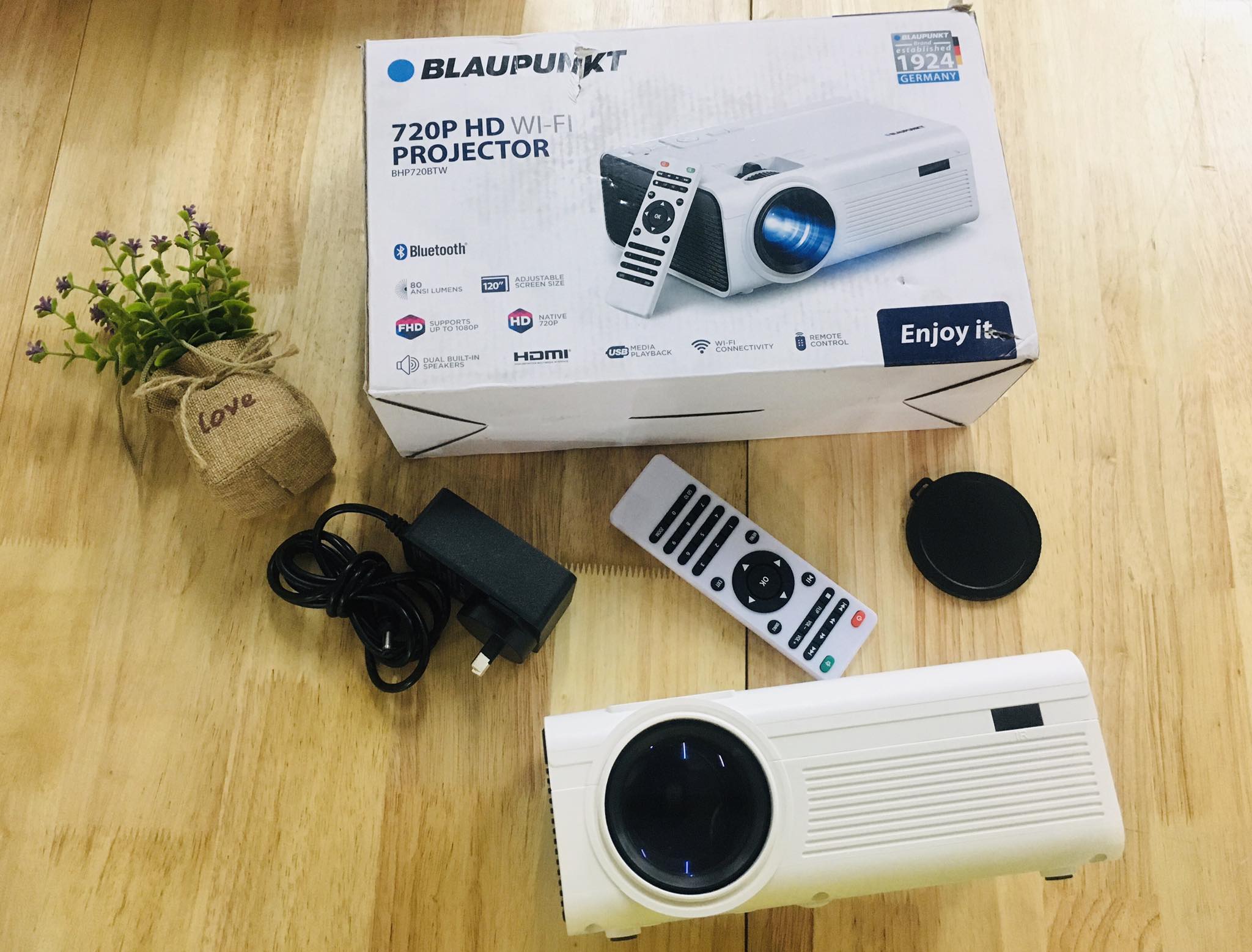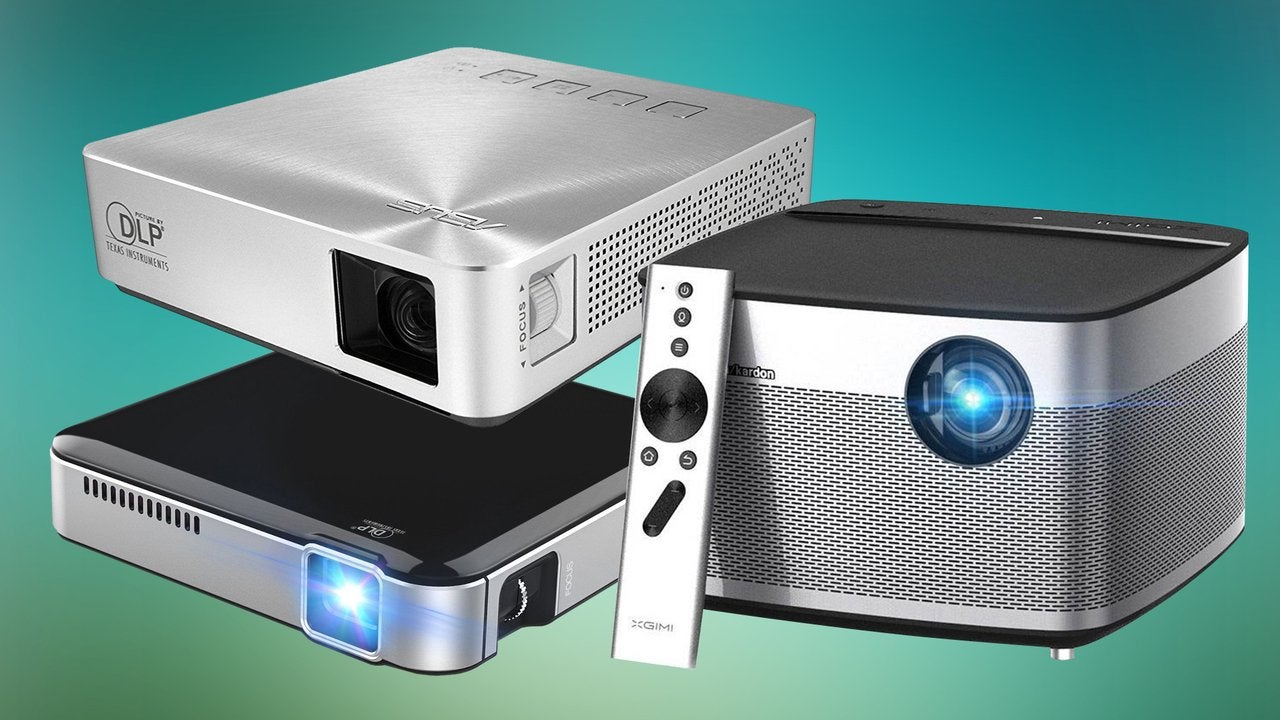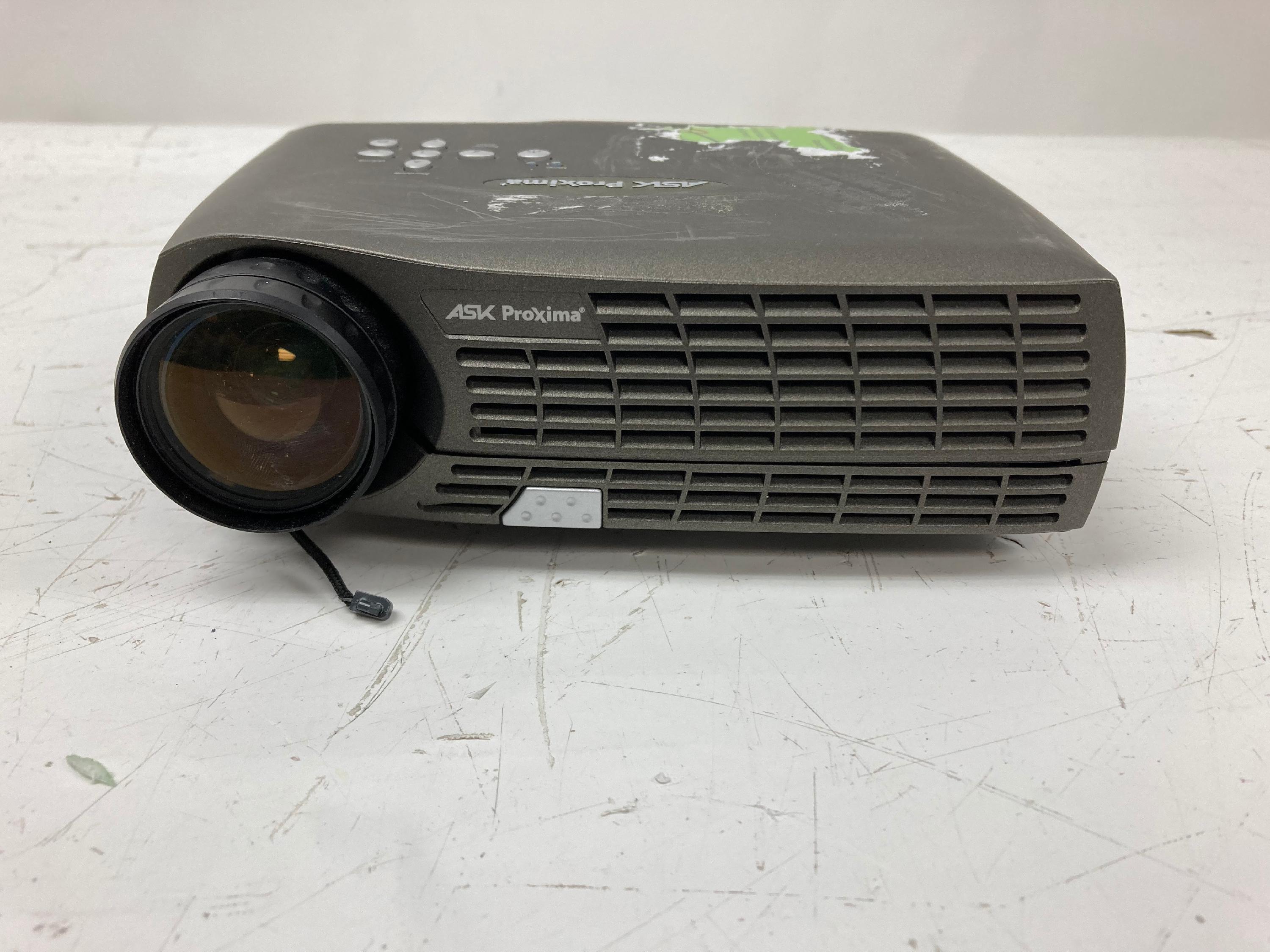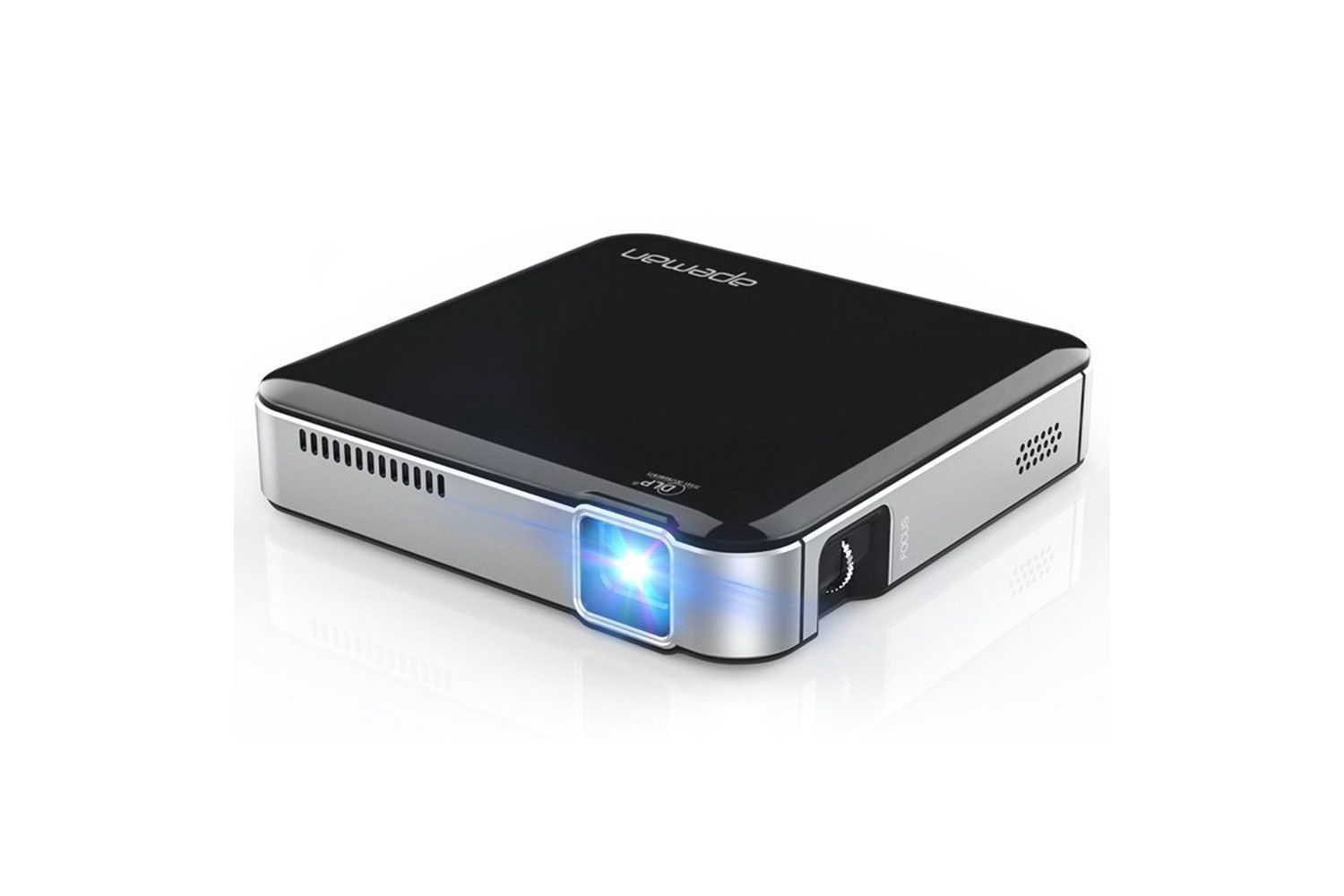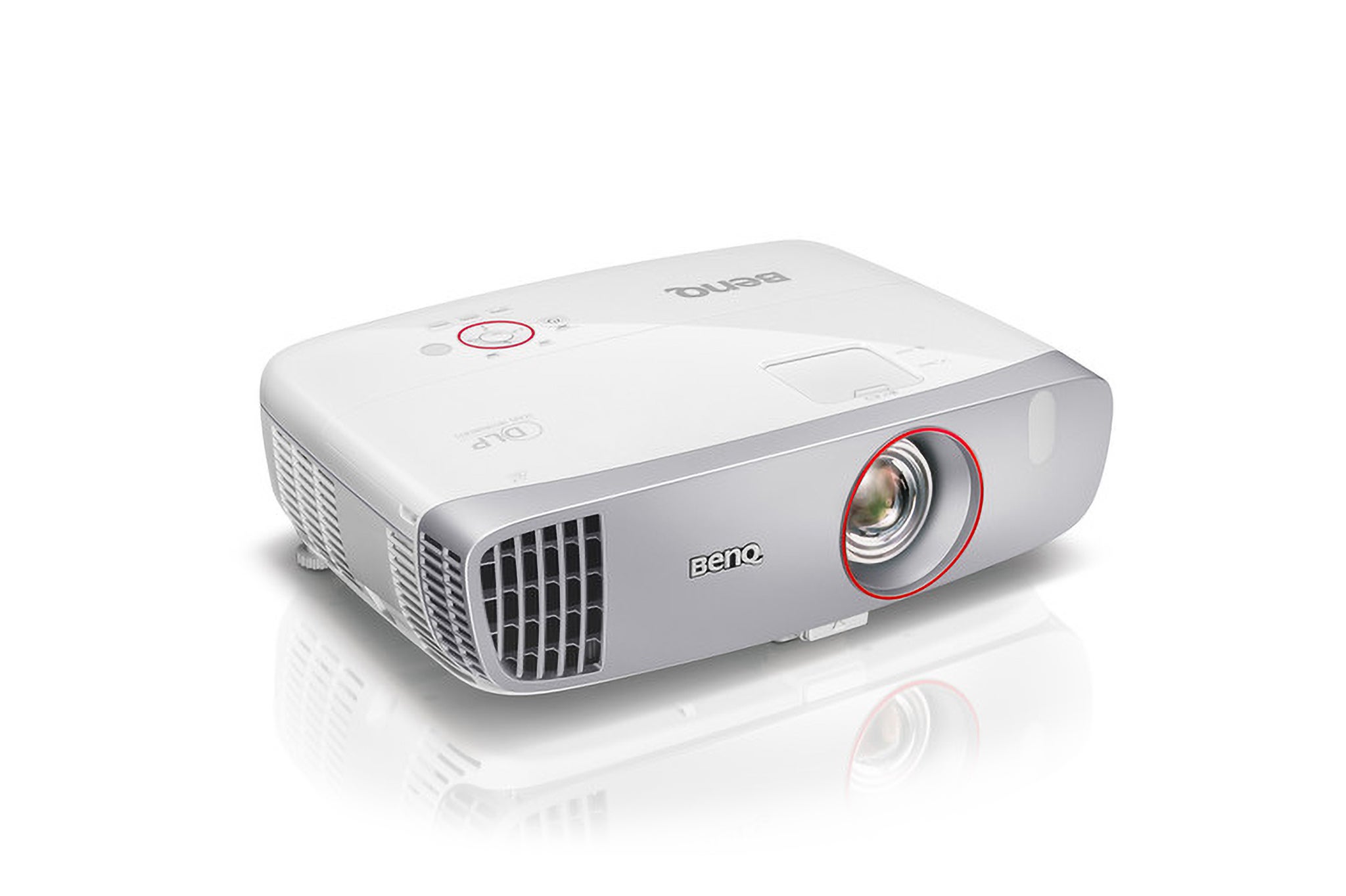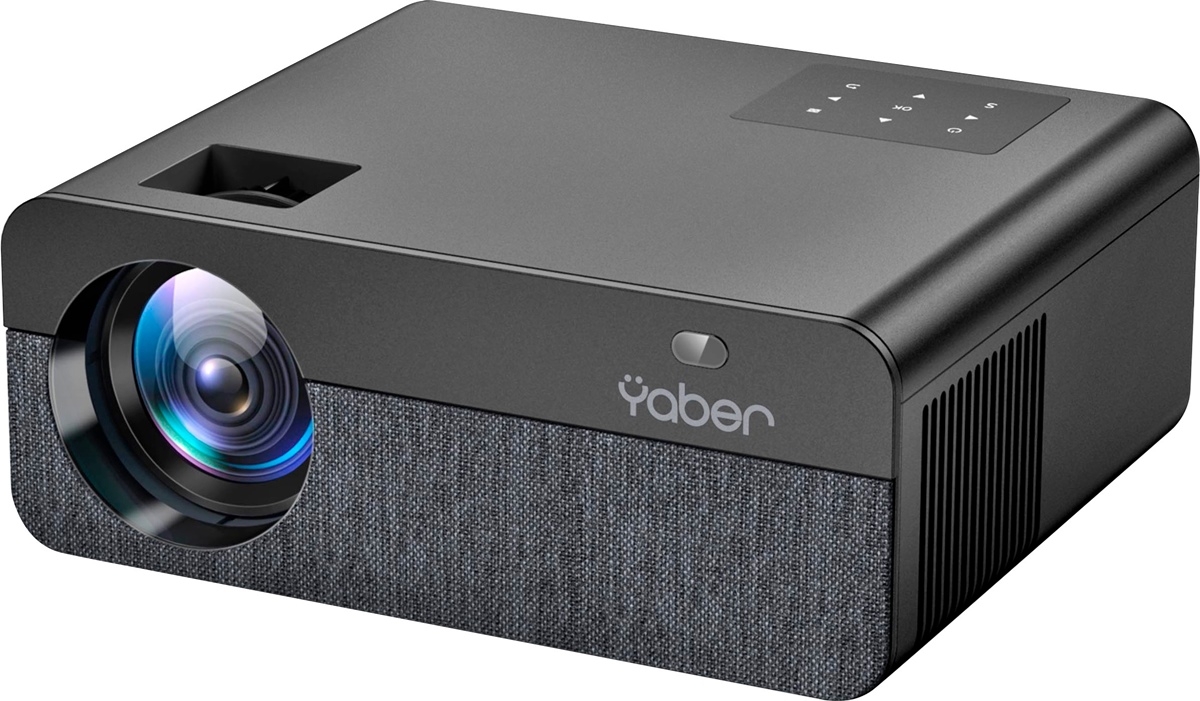What is a Wi-Fi Projector?
A Wi-Fi projector is a device that allows you to wirelessly display multimedia content from various devices such as laptops, smartphones, tablets, and game consoles onto a larger screen or wall. Wi-Fi projectors eliminate the need for cables and provide greater flexibility and convenience in sharing presentations, videos, photos, and other visual content.
Unlike traditional projectors that require wired connections, Wi-Fi projectors utilize wireless technology to establish a connection with compatible devices. This means you can easily stream content from your device to the projector without the hassle of connecting cables and adapters.
Wi-Fi projectors are commonly used in a variety of settings, including classrooms, boardrooms, home theaters, and outdoor gatherings. They offer an efficient and portable solution for sharing content, making them a popular choice for both personal and professional use.
These projectors typically come with built-in Wi-Fi connectivity or require the use of a separate Wi-Fi dongle or adapter. They can connect to your home or office network, allowing you to access files stored on network drives or cloud storage services. This means you can effortlessly access and present files from various sources without the need for physical media or USB drives.
To take advantage of the wireless capabilities of a Wi-Fi projector, it is important to ensure that your connected devices are compatible with the projector’s wireless protocols. Most modern smartphones, tablets, and laptops have built-in wireless display compatibility, allowing you to easily connect and mirror your screen to the projector.
With a Wi-Fi projector, you have the freedom to move around the room while controlling your presentation or media content from your device. This flexibility adds a new level of interactivity and engagement, allowing you to seamlessly navigate through slides, play videos, or interact with your audience without being tied to a specific location.
In the next section, we will explore how a Wi-Fi projector works and delve into the specific features and benefits it brings to the table.
How Does a Wi-Fi Projector Work?
A Wi-Fi projector works by utilizing wireless connectivity to establish a communication link between the projector and compatible devices. This allows for seamless streaming and display of multimedia content onto a larger screen or surface.
The process starts with the Wi-Fi projector connecting to an available wireless network. This can be done by either directly connecting the projector to a Wi-Fi network using built-in Wi-Fi capabilities or by using a Wi-Fi dongle or adapter that plugs into the projector’s HDMI or USB port.
Once connected to the network, the Wi-Fi projector acts as a receiver, waiting for incoming data or streaming requests from compatible devices. This can include laptops, smartphones, tablets, and other devices that support wireless display technologies such as Miracast, AirPlay, or Chromecast.
When a compatible device wants to share content with the Wi-Fi projector, it establishes a wireless connection with the projector by selecting it as the display option from the device’s settings menu. This initiates the streaming process, where the device sends the audio, video, or image data to the projector over the wireless connection.
The Wi-Fi projector receives the data and uses its internal processing capabilities to decode and convert the incoming data into a format suitable for projection. It then projects the content onto the surface or screen, allowing everyone in the room to view it.
Some Wi-Fi projectors also offer additional features, such as built-in media players or app compatibility, allowing you to access and stream content directly from online platforms or storage devices. These projectors often have their own user interface and remote control, providing a convenient way to navigate and select content without the need for a separate device.
While Wi-Fi projectors offer the benefits of wireless connectivity, it is important to note that the quality of streaming and projection depends on the strength and stability of the wireless network. A stable and high-speed Wi-Fi connection ensures a smooth and uninterrupted streaming experience.
In the next section, we will discuss the numerous benefits of using a Wi-Fi projector and how it can enhance your viewing and presentation experiences.
Benefits of using a Wi-Fi Projector
Using a Wi-Fi projector comes with a range of benefits that enhance your viewing, presentation, and entertainment experiences. Here are some key advantages of using a Wi-Fi projector:
1. Wireless Connectivity: The main advantage of a Wi-Fi projector is the elimination of cables. With wireless connectivity, you can easily connect and stream content from various devices without the hassle of cords or adapters. This allows for greater flexibility and mobility during presentations or entertainment setups.
2. Convenience and Portability: Wi-Fi projectors are portable and easy to set up in different locations. You can carry them to meetings, classrooms, or even outdoor gatherings without the need for complicated wiring. This makes them ideal for on-the-go professionals or users who require flexibility in their setup.
3. Wide Compatibility: Wi-Fi projectors are compatible with a variety of devices, including smartphones, tablets, laptops, and gaming consoles. This means you can easily connect and mirror your screen, making it effortless to share presentations, photos, videos, or even play games on a larger display.
4. Multiple Content Sources: With a Wi-Fi projector, you can access content from a wide range of sources. You can stream media from popular platforms such as Netflix, YouTube, or Hulu, access files stored on cloud storage services, or connect to network drives in your home or office. This flexibility allows you to enjoy a versatile range of content directly on the big screen.
5. Interactive Presentations: Wi-Fi projectors enable interactive presentations by allowing you to control your content wirelessly. You can walk around the room, engage with your audience, and seamlessly navigate through slides or documents from your device. This increased mobility enhances communication and creates a more engaging and collaborative environment.
6. Enhanced Entertainment: Transform your living room into a home theater with a Wi-Fi projector. You can enjoy movies, sports events, or gaming sessions on a big screen, providing a more immersive and cinematic experience. Additionally, some Wi-Fi projectors come with built-in speakers or audio output options, allowing you to create a complete audiovisual setup.
7. Easy Setup and Configuration: Wi-Fi projectors are designed to be user-friendly and easy to set up. Most projectors feature intuitive interfaces and on-screen prompts that guide you through the setup process. Connecting your device to the projector wirelessly is usually a straightforward process, enabling you to start streaming content in no time.
8. Flexible Display Options: Wi-Fi projectors can project content onto various surfaces, including walls, projection screens, or even ceilings. This versatility enables you to create a customized viewing experience based on your preferences or the available space.
In summary, a Wi-Fi projector offers the convenience of wireless connectivity, portability, and compatibility with various devices, making it a versatile solution for presentations, entertainment, and collaborative environments. Whether you are giving a presentation, enjoying multimedia content, or hosting a movie night at home, a Wi-Fi projector can greatly enhance your overall experience.
Setting up a Wi-Fi Projector
Setting up a Wi-Fi projector is a relatively straightforward process. The exact steps may vary depending on the make and model of your projector, but here are the general guidelines to help you get started:
1. Choose the Right Location: First, select an appropriate location for your Wi-Fi projector. Consider the distance to the screen or surface, the ambient lighting conditions, and the availability of power outlets. Ensure that the projector is positioned on a stable surface and has enough ventilation to prevent overheating.
2. Connect the Power: Plug in the Wi-Fi projector to a power outlet using the provided power cable. Make sure the projector is turned off during this step.
3. Connect to a Wireless Network: If your projector has built-in Wi-Fi capabilities, access the projector’s settings or menu and navigate to the network setup section. Connect the projector to your home or office Wi-Fi network by selecting the network name and entering the required password, if prompted. If your projector requires a Wi-Fi dongle or adapter, plug it into the appropriate port and follow the instructions provided.
4. Adjust Projector Settings: Access the projector’s settings menu to adjust display settings such as brightness, contrast, and screen orientation to your preferences. You may also configure network settings, language options, or audio output settings at this stage.
5. Connect Devices: To connect your device (e.g., laptop, smartphone, or tablet) to the Wi-Fi projector, ensure that your device is also connected to the same Wi-Fi network. Open the wireless display or screen mirroring settings on your device and select the name of the projector from the available options. Follow any on-screen prompts to establish the connection.
6. Test the Connection: Once the connection is established, test the projector by streaming a video or sharing content from your device. Verify that the projected image is clear and properly aligned with the screen or surface.
7. Adjust Projection Size and Focus: Depending on the distance between the projector and the screen, you may need to adjust the projector’s zoom or focus settings to obtain the desired projection size and image clarity. Refer to the projector’s user manual for specific instructions on how to make these adjustments.
8. Optional: Additional Connections: If you wish to connect external speakers or audio devices for enhanced sound quality, refer to the projector’s audio output options and connect the appropriate cables or devices.
9. Secure the Projector: To prevent accidental damage or theft, consider securing the projector using a mounting bracket or security cable. This is especially important if you plan to use the projector in public spaces or shared environments.
Setting up a Wi-Fi projector may require some initial configuration, but once the connection is established, you can enjoy the convenience of wireless streaming and content sharing. Refer to the user manual provided with your specific projector model for detailed setup instructions and troubleshooting tips, if needed.
Connecting Devices to a Wi-Fi Projector
Connecting your devices to a Wi-Fi projector allows for seamless streaming and display of content on a larger screen or surface. Here’s a step-by-step guide on how to connect your devices to a Wi-Fi projector:
1. Ensure Wi-Fi Connectivity: Make sure that both your Wi-Fi projector and device are connected to the same wireless network. This is crucial for establishing a connection between the two devices.
2. Access Device’s Display Settings: On your device (e.g., laptop, smartphone, or tablet), access the display settings or wireless display menu. The location of this option may vary depending on the operating system of your device.
3. Enable Screen Mirroring: Look for an option to enable screen mirroring or wireless display on your device. This feature may be labeled as “Screen Mirroring,” “Smart View,” “Cast,” or something similar, depending on your device’s manufacturer.
4. Select the Wi-Fi Projector: Once the screen mirroring feature is enabled, your device will scan for available screens to connect to. Select the name of your Wi-Fi projector from the list of available displays.
5. Establish the Connection: After selecting the Wi-Fi projector, your device will attempt to establish a connection. Depending on the projector and device, you may need to enter a connection code or PIN for pairing. Follow the on-screen instructions to complete the connection process.
6. Stream and Share Content: Once the connection between your device and the Wi-Fi projector is established, you can begin streaming and sharing content. Open the desired app, file, or media on your device and it will now be displayed on the projector screen. You can play videos, browse presentations, or show images, just as you would on your device’s screen.
7. Control the Display: Use your device as a remote control to navigate through the content being displayed on the Wi-Fi projector. You can swipe, tap, or click on your device’s screen to control the projected content.
8. Adjust Settings if Necessary: If needed, you can adjust the display and sound settings on your device to optimize the viewing experience. This may include adjusting the brightness, volume, or aspect ratio, depending on your preferences and the content being displayed.
Remember, the specific steps for connecting devices may vary depending on the operating system or brand of your device. If you encounter any difficulties, refer to the user manual of your Wi-Fi projector or consult the manufacturer’s website for further assistance.
With a Wi-Fi projector, you can effortlessly connect your devices and enjoy the convenience of streaming and sharing content on a larger screen, making it ideal for presentations, entertainment, and collaborative environments.
Troubleshooting Common Issues with a Wi-Fi Projector
While Wi-Fi projectors offer a convenient way to stream and display content wirelessly, you may occasionally encounter some common issues. Here are some troubleshooting tips for resolving these issues:
1. Weak or Unstable Wi-Fi Signal: If you are experiencing a weak or unstable Wi-Fi signal, try moving the Wi-Fi projector closer to the wireless router. Alternatively, you can consider using a Wi-Fi range extender or access point to improve the signal strength in the projector’s location.
2. Incompatible Devices: Ensure that your device supports wireless display technology such as Miracast, AirPlay, or Chromecast and that it is compatible with your Wi-Fi projector. Check the manufacturer’s specifications or user manual to confirm compatibility. Update your device’s firmware or operating system if necessary.
3. Connection Issues: If you are having trouble connecting your device to the Wi-Fi projector, try the following steps:
– Restart both the projector and your device.
– Make sure both devices are connected to the same Wi-Fi network.
– Disable and reenable the screen mirroring or wireless display feature on your device.
– Check if the Wi-Fi projector requires a connection code or PIN for pairing and ensure that it is entered correctly.
4. Audio or Video Lag: If you encounter audio or video lag, make sure that your Wi-Fi network is stable and not congested. Reduce the distance between the Wi-Fi projector and the wireless router to minimize latency. Consider using an Ethernet cable instead of wireless connectivity for a more stable connection.
5. Inconsistent Resolution: If the projected content appears blurry or pixelated, ensure that the projector’s resolution settings are configured correctly. Match the resolution of the projector with the native resolution of your content to achieve the best image quality. Adjust the focus and zoom settings of the projector if necessary.
6. Interference from Other Devices: Other electronic devices such as microwave ovens, cordless phones, or Bluetooth devices can interfere with the Wi-Fi signal and cause disruptions. Move these devices away from the Wi-Fi projector or switch to a different frequency band to minimize interference.
7. Outdated Firmware or Software: Check if there are any firmware or software updates available for your Wi-Fi projector. Updating the firmware or software can address compatibility issues and improve the overall performance and stability of the projector.
8. Reset the Wi-Fi Projector: If all else fails, you can try resetting the Wi-Fi projector to its factory default settings. Refer to the user manual for instructions on how to perform a reset. However, be aware that this will erase any custom settings or configurations you have made.
If you continue to experience issues with your Wi-Fi projector, consider contacting the manufacturer’s customer support for further assistance. They may be able to provide specific troubleshooting steps or recommend additional solutions based on your projector model and the issue at hand.
Comparing Wi-Fi Projectors to Traditional Projectors
When it comes to choosing a projector, you may have the option of selecting either a Wi-Fi projector or a traditional projector. Let’s compare the two to help you make an informed decision:
Connectivity:
– Wi-Fi Projectors: Wi-Fi projectors offer wireless connectivity, allowing you to easily connect and stream content from compatible devices. They eliminate the need for cables and adapters, providing greater convenience and flexibility.
– Traditional Projectors: Traditional projectors typically require wired connections using HDMI, VGA, or other cable types. This may limit the mobility and flexibility of the setup, especially in environments where cable management can be challenging.
Portability:
– Wi-Fi Projectors: Wi-Fi projectors are generally designed with portability in mind. They are lightweight, compact, and easy to transport, making them ideal for on-the-go professionals or users who frequently move their projector between locations.
– Traditional Projectors: Traditional projectors can be bulkier and heavier compared to Wi-Fi projectors. They may require additional accessories, such as mounting brackets or carrying cases, for convenient transportation.
Content Sources:
– Wi-Fi Projectors: Wi-Fi projectors provide the flexibility to stream content from a wide range of sources. You can access online platforms like Netflix, YouTube, or Hulu, as well as stream content from network drives or cloud storage services.
– Traditional Projectors: Traditional projectors usually rely on physical media, such as DVDs or USB drives, to play content. They may require additional equipment, such as media players or laptops, to access and display digital files.
Setup and Configuration:
– Wi-Fi Projectors: Setting up a Wi-Fi projector is typically easier and faster compared to traditional projectors. They often come with intuitive user interfaces and on-screen prompts that guide you through the setup process. Connecting devices wirelessly is generally a straightforward procedure.
– Traditional Projectors: Traditional projectors may require more extensive setup and configuration, involving cable connections, input settings, and potentially more complex menu navigation. They usually provide a wide range of manual adjustments for image quality and keystone correction.
Interactivity:
– Wi-Fi Projectors: Wi-Fi projectors offer enhanced interactivity, allowing you to control and navigate through content wirelessly from your device. You can walk around the room, engage with your audience, and seamlessly switch between different content sources, enhancing collaboration and engagement.
– Traditional Projectors: Traditional projectors typically require direct access to the projector or the use of separate control devices, such as remote controls or laser pointers, to interact with the content being displayed.
In summary, Wi-Fi projectors offer the convenience of wireless connectivity, enhanced portability, and the flexibility to stream content from various sources. They are easy to set up and provide improved interactivity compared to traditional projectors. However, traditional projectors may still be suitable depending on specific requirements, such as fixed installations or connectivity to legacy systems. Consider your usage scenario, preferences, and the specific features offered by each type before making your decision.
Conclusion
Wi-Fi projectors have revolutionized the way we share and display content, providing convenience, flexibility, and improved interactivity. With wireless connectivity, you can easily connect and stream multimedia content from various devices, eliminating the need for cables and adapters. Whether you’re giving a presentation, enjoying entertainment, or hosting a movie night at home, a Wi-Fi projector offers a versatile and immersive viewing experience.
One of the standout benefits of Wi-Fi projectors is their portability. They are lightweight, compact, and easy to move from one location to another, making them ideal for professionals who frequently travel or for users who need flexibility in their setup. Additionally, Wi-Fi projectors offer a wide range of connectivity options, allowing you to stream content from online platforms, access files stored on network drives or cloud storage services, and mirror your device’s screen wirelessly.
The interactivity provided by Wi-Fi projectors is another remarkable feature. By enabling wireless control and navigation, you can move around the room, engage with your audience, and seamlessly switch between content sources. This promotes collaboration and enhances the overall presentation or entertainment experience.
Despite the numerous advantages of Wi-Fi projectors, it’s important to consider the specific requirements of your setup and the compatibility of your devices. Traditional projectors may still be suitable for situations where fixed installations or connectivity to legacy systems are necessary.
In conclusion, Wi-Fi projectors have transformed the way we share, present, and enjoy multimedia content. They offer wireless connectivity, portability, enhanced interactivity, and access to a wide range of content sources. Whether you’re a student, professional, or home user, a Wi-Fi projector can greatly enhance your viewing, presentation, and entertainment experiences. Choose the right Wi-Fi projector for your needs, follow the setup instructions, and enjoy the freedom and versatility that wireless projection brings.







